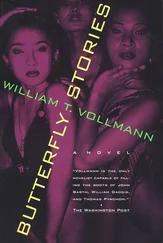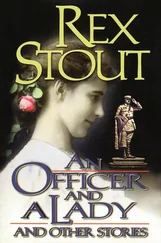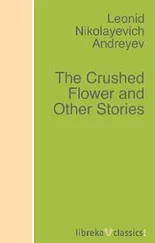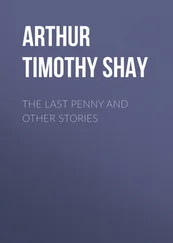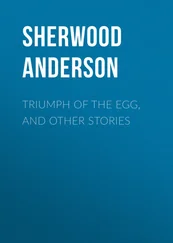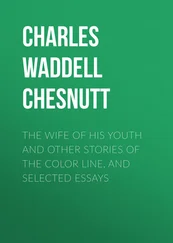The first Hnoss, Swegde, postmortem taxes to Frey, etcetera— Snorri Sturluson, Heimskringla, Part Two: Sagas of the Norse Kings , trans. Samuel Laing, rev. Peter Foote, M.A. (New York: Dutton: Everyman’s Library, 1961 rev. of 1844 trans.; orig. text 1220–1235), pp. 7–17. My Queen Hnoss is invented, as is her husband, King Yngvar, not to mention the Jötunsbok (I do wish that Frost Giants could write).
Einar Audunsson— My invention.
THE GHOST OF RAINY MOUNTAIN
Rainy Mountain is an invented place, but some of the landscape is indebted to the shrine of Nikko.
THE CAMERA GHOST
The watcher on the side— For readers who might not be familiar with Japanese Noh plays, the “watcher on the side,” the waki, is the one to whom the story (usually one of suffering as a result of an undying attachment) is narrated. Several other Noh references appear in “The Camera Ghost.” These would require much explication here, none of which is needed (I hope) to parse the story. A résumé of Noh characters and situations may be found in my book Kissing the Mask.
My camera’s eye— It was certainly strict in its fashion, neither blinking away an annoying telephone wire nor softening anything sad with a tactful tear. But because it was so uncompromising, it taught me how to see more carefully, so that unwanted telephone wires became fewer over the years.
“Was he two or were we one?”— These lines and the scene within the camera were partly inspired by watching the great Noh actor Mr. Umewaka Roruko in the backstage “mirror room” and interviewing him about his sensations. See my Kissing the Mask. It has been said that while preparing for a performance the Noh actor gazes into the mirror at his masked self, until he and the masked other come together. Still more haunting to me, the actor compels himself to see the stage as mirror and himself as reflected image. See Kunio Komparu, The Noh Theater: Principles and Perspectives, trans. Jane Corddry [text] and Stephen Comee [plays] (New York: Weatherhill/Tankosha, 1983 rev. expanded ed. of orig. 1980 Japanese text), pp. 7–8.
“Down this road we go, we go; / delusion’s road…” — Meant to sound like a Noh chorus, but all my mumbo-jumbo.
“and new pictures bloom up for the plucking, / so that I can never rest, never rest.” — This reflects the obsessive attachment of a ghost in a Noh play (or, for that matter, an Eastern European vampire who can’t help but count grains of rice until sunrise overtakes him). But in Noh the ghost would be so utterly tortured by his misery that he would be grateful to get freed by a priest and go into oblivion, whereas the protagonist of this story is proud to soldier on.
“In every grain of silver is a place of practice…” — These two lines allude to a much longer stanza of the Nara-era “Buddha Kingdom of the Flower Garland”: “In every speck of dust the Buddha establishes a place of practice, / Where he enlightens every being and displays spiritual wonders. /… while coursing through a past of a hundred thousand eons…”— William Theodore de Bary, Donald Keene, George Tanabe and Paul Varley, comps., Sources of Japanese Tradition, vol. 1: From Earliest Times to 1600 (New York: Columbia University Press, 2001; orig. comp. 1950s), p. 110.
The beauty of the old waitress— The lens is fortuitously cracked through which poets see verses about the muted rusty beauties of decrepitude.
THE CHERRY TREE GHOST
Epigraph: “If cherry blossoms were never in this world…”— Hiroaki Sato and Burton Watson, trans. and eds., From the Country of Eight Islands: An Anthology of Japanese Poetry (New York: Columbia University Press, 1986), p. 108 (tanka from “On Nunobiki Waterfall,” “retranslated” by WTV).
“because the girl paid threefold reverence to the Three Buddhist Treasures…” — Information from de Bary, p. 193 (Annen [841–889 A.D.], “Maxims for the Young”).
Sunshine at midnight, etcetera— These three tropes are allusions to Noh theater. One of Noh’s two thirteenth-century creators, Zeami Motokiyo, says in reference to the highest level of beauty: “In Silla at the dead of night, the sun shines brightly.” See On the Art of No Drama: The Major Treatises of Zeami, trans. J. Thomas Rimer and Yamazaki Masakzu (Princeton:, NJ: Princeton University Press, 1984), pp. 372–76 (“The Nine Stages of the No in Order”). See also my book Kissing the Mask.
“She carries her ageing beautifully.”— Komparu remarks (p. 15) that other kinds of rojaku , or “quiet beauty” in a Noh performance, “can never approach the profundity nor the burden of aging borne by every beautiful woman and the dread of the ugliness that must come with the passing of the years.” The great poetess Ono no Komachi, the heroine of several Noh plays (see Kissing the Mask ) had the misfortune to utterly outlive her physical loveliness. Komparu interprets the old woman-ghost’s attachment to her youthful beauty as an agony akin to the flames of hell.
“Kinuta” is a Noh play about the ghost of a wife who died of grief when her husband stayed away from home, preferring a younger woman. See Kissing the Mask.
“Even the dream-road is now erased.” — Much “retranslated” from Robert H. Brower and Earl Miner, Japanese Court Poetry (Stanford, CA: Stanford University Press, 1997 pbk. repr. of 1961 ed.), p. 309 (Ariie, “Snow at the Village of Fushimi”).
Keisei’s warnings— De Bary et al., pp. 404–5 (excerpts from A Companion in Solitude, written 1222).
“Mr. Kanze in a carplike costume”— The description here and immediately following is based on notes I took during a Takigi Noh (outdoor torchlit Noh) performance by the late Mr. Kanze Hideo in 2005.
The Heian convention of pairing blue paper with a willow twig— Ivan Morris, The World of the Shining Prince: Court Life in Ancient Japan (New York: Kodansha International, 1994 exp. repr. of 1964 ed.), p. 188.
Teika’s tanka about crossing a gorge— A translation appears in Brower and Miner, p. 308.
“Better never to awake from this night of dreams.” — My retranslation of Saigyo, in Brower and Miner, p. 308.
PAPER GHOSTS
Epigraph: “It seemed that the faded vermilion of the shrine…”——[The courtier Yukinaga?], The Tale of the Heike (Heike Monogatari), trans. Hiroshi Kitagawa and Bruce T. Tsuchida, 2 vols. (Tokyo: University of Tokyo Press, 1975; orig. Japanese text ca. 1330), vol. 2, p. 467.
“Your prayers will no longer be accepted.”— Ibid., vol. 2, p. 427. The Heike had committed sacrilege. Therefore, although they “prayed to the gods of the mountain for sympathy,” “their prayers were no longer accepted.”
“It is really impossible to compare my heart to anything.” — Abbreviated from Ono no Komachi: Poems, Stories, No Plays, trans. Roy E. Teele, Nicholas J. Teele, H. Rebecca Teele (New York: Garland, 1993), p. 48 (Komachi Soshi). Original reads: “It is really impossible to compare the way my heart is to anything.”
“Wait awhile; wait awhile.” — In the Noh play “Shunkan,” two of the three Genji exiles are finally pardoned by the Heike, and only Shunkan is left alone on their island of exile. The two who are returning to the capital call back across the widening stretch of water, “Wait awhile, wait awhile,” but no one ever comes for him, excepting only a loyal retainer who can do nothing but watch him die.
Compositional note: The girl in the red kimono might or might not have been a cherry tree; another ghost promised me that she was, but how could I know? Just as a Japanese ghost is said to be legless, with outstretched drooping hands, so it is with any cherry tree; but I can’t swear that all cherry trees are ghosts. Trying to describe her and failing, I wadded up sheets of paper in crumpled balls and threw them down; they turned into swarms of flowers.
Читать дальше

